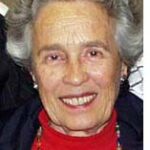By Eileen Wingard

SAN DIEGO — With rhythmic incisiveness, virtuosic flair and technique to burn, Asi Matathias, violin and Victor Stanislovsky, piano, performed a riveting violin-piano recital last Thursday evening at the Lyceum Theatre. The America-Israel Cultural Foundation co-sponsored the evening, part of the Lipinsky Jewish Arts Festival. All proceeds went to the America-Israel Cultural Foundation which, through its scholarship program, fosters the development of young Israeli talent.
Matathias was heard in a La Jolla recital last March, and he repeated two of the works from that program, Brahms’ Scherzo from the F-A-E Sonata, with which he opened his program, and the Romanza Andeluza by the great Spanish violinist, Pablo Sarasate. In addition, the two performed the Nigun by Ernest Bloch and the Camille Saint-Saens’ Sonata in D minor. That seldom-heard, four- movement work showcased the duo’s superb virtuosity. The lilting third movement delighted with sprightly spiccatos. The last movement featured a bravura moto prepetuo, appearing fiendishly difficult to coordinate.
After intermission, the pair offered a convincing rendition of Brahms’ sonata for violin and piano in A major. Matathias’ glorious G-string tone on his Guarnerius violin was particularly evident in the finale. This three-movement work overflows with the moodiness and passion of love. Some say, it is music reflective of the affection Brahms felt for his dear friend, Clara Schumann, widow of Robert Schumann.
Victor Stanislavsky is a string player’s dream. He is not only a soloist in his own right—I recall his solo program at the Athenaeum several seasons ago—but he is an outstanding collaborator, sensing every rhythm and nuance of his partner and controlling his dynamics so that he never covers the string sound.
As my companion for the evening remarked, “They are so adorable and precious, I would like to take them home with me; they appear to be teenagers. “
Although they are not teenagers, Asi is 25 and Victor is several years older, they exhude youthful charisma on stage.
For the final number on the program, the Israeli pair played Sarasate’s show piece, Zigeunerweisen (Gypsy Airs). Asi made child’s play out of the challenging technical hurdles such as the left hand pizzicatos and the rapid spiccato passages. They left the audience in awe as it rose in unison for a standing ovation following the concluding notes.
The young artists needed to leave the next morning for a recital in Pennsylvania. Asi will be repeating this program next year in a Tully Hall recital in New York City. Both have busy careers as soloists and chamber music players.
This marks the fourth time in the twenty-one year history of the Lipinsky Jewish Arts Festival that classical violin virtuosos have performed programs.
Violinist Zina Schiff, who is my sister, gave a memorable recital in honor of the 3000th year of Jerusalem, featuring pieces by Jewish composers from around the world. On another season, she was featured in a program of works by composers of Russia’s Jewish Folk Song Society, and a premiere of a composition by David Hush for violin, string bass and tabla. A later season had the young San Diego violinist , Eugene Ugorski, performing an impressive program in the Unitarian Church as part of the Lipinsky Jewish Arts Festival. Over the years, I recall some classical pianists and even Er’ella Talmi, flutist and wife of the conductor, Yoav Talmi, performing as soloist with the San Diego Chamber Orchestra as part of the festival. It is hoped that a classical music component will continue to be included in future Lipinsky Jewish Arts Festivals.
*
Wingard is a retired San Diego Symphony violinist and freelance writer specializing in the arts. She may be contacted via eileen.wingard@sdjewishworld.com